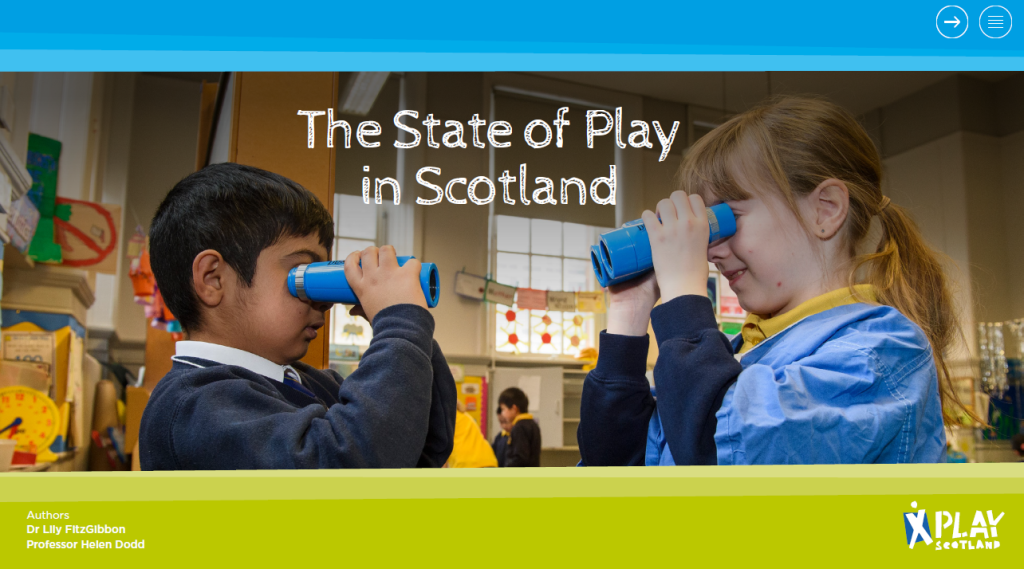The State of Play in Scotland report was written by Dr Lily FitzGibbon & Professor Helen Dodd for Play Scotland.
The State of Play in Scotland report brings together the findings of four previous reports focused on children’s play, in consultation with children and young people.
This report shows the consistent messages across these research projects; the things that we can confidently say that we now ‘know’ based on what children and the people who care for them have said.
Consistent messages
Children and young people continually report that:
- Play is fun and important for children’s wellbeing
- Relationships with friends and family are an important part of play
- Play outdoors brings opportunities for being active and enjoying nature
- Children and young people’s access to local space is precious
- Diversity of spaces and activities is appreciated
- Digital play is valued and balance is important
- Barriers to play include:
· Not enough places to play locally
· Austerity, budget cuts, lack of maintenance
· Scottish weather
· Antisocial behaviour and other safety concerns
Recommendations
We have a moral obligation not to keep asking children the same questions, but to take their responses and turn them into action.
The report provides some clear recommendations for action and we hope that it
inspires change.
We end the report with children and young people’s hopes, ideas
and suggestions for making things better. These were surprisingly
practical; children and young people aren’t asking for the world, they
know what the solutions are:
- More places for play – these can be informal and natural spaces as well as formal spaces
- Better access to play spaces – children and young people need to be able to get to where they want to play
- Fewer cars, slower traffic – the danger posed by cars is real, so reducing or calming traffic is vital
- Opportunities for active travel – children and young people want to walk and cycle, this gives them freedom
- Age-appropriate facilities – most playparks are designed for young children; where will older children play?
- Maintain and repair – children want to be able to use what
is there already - Shelter – shelter makes it easier to be outside in bad
or unpredictable weather - Lighting – lighting makes spaces safer for everyone
- More inclusive places to play – safe, accessible, and inclusive play spaces for children and young people with additional support needs
Download the report to read the full findings.





